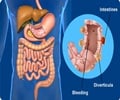An analysis of fast-food restaurants in the US demonstrates that fast-food entrees, sides, and desserts increased significantly in calories and sodium and entrees and desserts in portion size over time.

‘The findings of the study reveal how fast foods have contributed to the increased incidence of obesity and other chronic diseases among people of all ages.’





Fast-food restaurants are on the rise around the world. In the US, about 37 percent of adults (aged >20 years) consume fast foods on any given day, and that increases to 45 percent for adults aged 20-39. One meal with an entree and side provides an average of 767 kcals, or close to 40 percent of a 2,000-calorie a day diet. Add a caloric beverage, and the amount increases to 45-50 percent of a person's daily calorie intake. Dr. McCrory noted, "Given the popularity of fast food, our study highlights one of the changes in our food environment that is likely part of the reason for the increase in obesity and related chronic conditions over the past several decades, which are now among the main causes of death in the US." Dr. McCrory and colleagues examined changes over the 30-year period from 1986 to 2016 in energy, portion size, energy density, sodium, iron, and calcium of menu items in entrees, sides, and desserts categories offered by 10 of the top fast-food restaurants (according to sales). Data were collected using The Fast Food Guide, published in 1986 and 1991, and online sources in 2016. The most significant findings were:
• Total number of entrees, desserts, and sides increased by 226 percent, or 22.9 items per year.
• Calories in all three categories increased significantly, with the largest increases in desserts (62 kcals per decade), followed by entrees (30 kcals per decade). These increases were mainly due to the increase in portion size, which was statistically significant in entrees (13 grams per decade) and desserts (24 grams per decade) categories.
• Sodium also increased significantly in all menu categories.
Advertisement
The change in calcium and iron levels in some of the menu categories, in particular desserts, is a positive development since these nutrients are important for good bone mass and preventing anemia. However, the investigators stress that there are better sources that do not come with high calories and sodium. Dr. McCrory expressed a hope that the study's findings would lead to higher awareness and creative solutions. "We need to find better ways to help people consume fewer calories and sodium at fast-food restaurants. The requirement that chain restaurants display calories on their menus is a start. We would like to see more changes, such as restaurants offering smaller portions at a proportional prices," she concluded.
Advertisement
Source-Eurekalert















